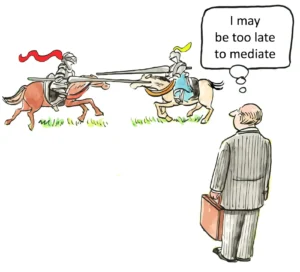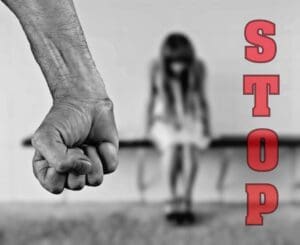How Power Imbalance Shapes the Struggle Between Victims and Institutions
The moment an institution turns against an individual, the world shifts. It can feel like standing at the foot of a glass skyscraper with nothing but a single, folded piece of paper in hand. The entities we are taught to trust—hospitals that should heal, police forces that should protect, corporations that provide essential services—can become impenetrable fortresses of denial and deflection, a reality that pushes many to seek the help of medical malpractice lawyers New York to even begin the fight for accountability. The ensuing conflict is never a dispute between equals. It is a confrontation with a system, a complex machinery of policies, personnel, and power designed for self-preservation. For the victim, the struggle is rarely just about the tangible harm they suffered. It is a deeply human and often isolating quest for validation. It is the fight to have their experience acknowledged as real, to have their truth heard above the carefully constructed narrative of the organization that wronged them, and to reclaim a sense of justice in a world that has been tilted off its axis.
The Architecture of Institutional Power
An institution’s power is not just a matter of size; it is a carefully constructed architecture of advantage. The first pillar is a near-limitless disparity in resources. While an individual might drain their life savings to pursue a claim, for the institution, legal battles are a predictable operating expense, handled by salaried attorneys and risk management experts. The second pillar is informational asymmetry.
The institution holds all the crucial evidence—internal reports, personnel records, video footage, and chains of command. The victim is an outsider, forced to fight for every document, often receiving redacted files or facing outright refusal. Finally, there is the shield of legitimacy. An official statement from a hospital spokesperson or a police chief is often treated as the default truth, while the victim’s account is scrutinized and questioned from the start. This imbalance is the bedrock of the institution’s defense, creating an immediate and formidable barrier to accountability.
Main Institutional Powers:
- Financial Resources: Vast funds for legal defense, public relations, and operational continuity.
- Information Control: Exclusive access to critical data, internal reports, and personnel records.
- Perceived Legitimacy: Public trust and authority in official statements and narratives.
- Legal Expertise: Dedicated legal teams and established protocols for managing disputes.
- Structural Inertia: The sheer difficulty of challenging established systems and hierarchies.
The Labyrinth of Procedure and Protocol
Institutions often defend themselves not with confrontation, but with a suffocating labyrinth of procedure. An individual seeking answers is handed forms, directed to obscure internal affairs departments, and given vague timelines for reviews that stretch into months or years. This weaponized bureaucracy is a defensive wall, designed to exhaust a challenger’s patience and resources. Behind this wall often lies a powerful culture of protection, an unspoken code where loyalty to the institution and its members takes precedence over any duty to the victim.
This dynamic ensures that internal investigations frequently find no wrongdoing, dismissing valid claims as unsubstantiated. It is this frustrating, opaque reality that often serves as a turning point, the moment a person realizes the system is not designed to help them. They understand they cannot navigate it alone, a realization that prompts an urgent need to find police misconduct counsel, to simply have a chance at being heard.
Forging a Path to Accountability
Despite the profound imbalance, avenues for accountability do exist. The most significant equalizer is skilled legal advocacy. A determined lawyer can force an institution to the negotiating table, using legal tools like discovery to unearth the very information the organization seeks to hide. Beyond the courtroom, there is immense power in a collective voice. When individual stories of harm coalesce into a pattern—through class-action lawsuits, victim support groups, or public campaigns—it becomes far more difficult for an institution to dismiss the problem as an isolated incident.
| Avenue for Accountability | Analysis |
| Skilled Legal Advocacy | Leverage: Utilizes legal frameworks (e.g., discovery, subpoenas) to compel disclosure and negotiation. Impact: Can directly challenge informational asymmetry and resource disparity by forcing the institution into a structured legal battle. |
| Collective Voice | Leverage: Transforms isolated incidents into undeniable patterns, making dismissal difficult. Impact: Increases visibility and perceived credibility, fostering solidarity among victims and strengthening their collective bargaining position. |
| Public Scrutiny | Leverage: Harnesses media (journalism, social media) to expose institutional wrongdoing. Impact: Generates external pressure, damages reputation, and can trigger investigations or policy changes that internal complaints often fail to achieve. |
| Regulatory Oversight | Leverage: Government agencies or industry bodies enforce standards and investigate complaints. Impact: Can impose fines, sanctions, or mandates for systemic change, acting as an external check on institutional power (though sometimes influenced by it). |
Furthermore, public scrutiny remains a potent force. Investigative journalism or viral social media content can cast a spotlight so intense that it forces a response. This external pressure can achieve in days what years of internal complaints could not, proving that sometimes the court of public opinion is the only one that can compel a powerful entity to listen.
Conclusion
Ultimately, the struggle between a victim and an institution is rarely a straightforward case of right versus wrong. It is a collision defined by a fundamental disparity in power. The fight is not just to win a settlement but to challenge a system’s inherent impunity and demand that a human story be valued over an organization’s reputation. Each person who undertakes this daunting journey does more than fight for themselves; they create cracks in the walls of institutional silence and contribute to the possibility of systemic reform. Their battle underscores a vital societal truth: that true justice requires not only laws and procedures but the immense personal courage to confront overwhelming power and the collective will to ensure that no one has to do it alone.













